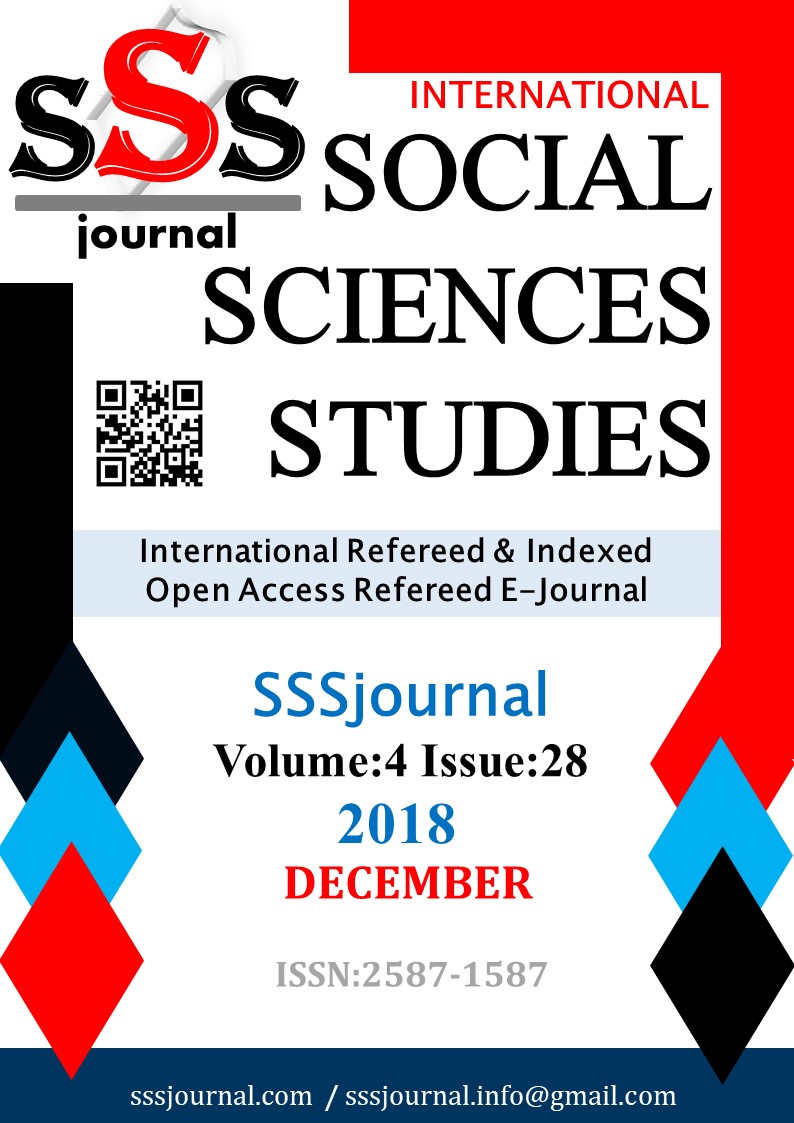TARIM TOPLUMUNDAN BİLGİ TOPLUMUNA DÖNÜŞÜM SÜRECİ VE KENTSEL ORGANİZASYONUN KONDRATİEFF DALGA MODELİ ÜZERİNDEN OKUNMASI
Author :
Abstract
Bu makalede tarihsel süreç içerisinde yaşanan farklı bilimsel ve teknolojik paradigmaların, toplumların örgütsel yapısı ve kent mekânı üzerindeki etkileri incelenmiştir. Bu inceleme kapsamında; toplum ve mekânın etkileşimli ilişkisi Kondratieff Dalga Modeli üzerinden tartışılmıştır. Tarım, sanayi ve bilgi toplumlarını yaratan temel süreçler esasen bir öncekinin doğurduğu altyapı üzerine biçimlenmiştir. Bu süreçte; teknolojik gelişmeler yarattıkları ekonomik kırılmalar ile yeni toplumsal yapının nüvelerini oluşturmakta, öte yandan gerilimleri ve kent mekanındaki kaosu da beraberinde getirmektedir. Tarım toplumundan enformasyon toplumuna kadar geçen süreçte küresel sistemin bir aktörü haline gelen kentlerin yaşadığı ekonomik dalgalar sosyo-kültürel ve mekânsal değişimler olarak tüm işlev alanlarına yansımaktadır. Tarım toplumunun sosyal örgütsel yapısının şekillendirdiği yerleşim organizasyonu bilgi toplumunda değişen etkenler ile kenti yeniden ve farklı mekânsal parçalara bölmektedir. Öte yandan coğrafi sınırları ortadan kaldırması ise zaman ve mekân kavramına yeni bir boyut eklemektedir. Günümüzde artan nüfus, kentsel yerleşmelerin sınırlarının ortadan kalkması, iletişim ve ulaşım teknolojilerinin gelişmesine karşın sosyal ayrışmaların mekânsal izdüşümlerinin yoğunlaşması geleceğin kentlerinde önemli kaygıları ve güncel tartışmaları oluşturmaktadır.
Keywords
Abstract
In this article, the effects of different scientific and technological paradigms in the historical process on the organizational structure of the societies and the urban space were examined. Within the scope of this review; The interactive relationship between society and space was discussed through the Kondratieff Wave Model. The basic processes that create the agriculture, industry and information societies are essentially based on the infrastructure of the previous one. In this process; technological developments create the cores of the new social structure with the economic breakdowns they create and bring about the tensions and chaos in the city. The economic waves experienced by the cities, which have become an actor of the global system in the period from agricultural society to information society, are reflected in all functional areas as socio-cultural and spatial changes. The settlement organization shaped by the social organizational structure of the agricultural society divides the city into different spatial parts by changing factors in the information society. On the other hand, eliminating geographic boundaries adds a new dimension to the concept of time and space. The growing population, the disappearance of the urban settlements, the development of communication and transportation technologies, and the intensification of spatial projections of social divisions constitute important concerns and current debates in the cities of the future.
Keywords
- Bell, Daniel (1976). The Coming of Post-Industrial Society: A Venture in Social Forecasting. U.S.A.: Basic
- Bell, Daniel (1976). The Coming of Post-Industrial Society: A Venture in Social Forecasting. U.S.A.: Basic Books.
- Bergel, Egon Ernest (1996). Kentlerin Doğuşu. Cogito: Üç Aylık Düşünce Dergisi, s: 8, İstanbulCastell, Manuel (1997). Kent Sınıf Iktidar, (Çev:A.Erendil). Ankara: Bilim ve Sanat Yayınları.
- Eisner, S., Gallion (1993). The Urban Pattern: City Planning and Design. New York: Van Nostrand Reinhold.
- Erkan, Hüsnü. http://ab.org.tr/ab06/bildiri/236.doc, erişim tarihi: 12.02.2016. Hall, Peter. (2002). Urban and Regional Planning. London: Routledge
- Kazgan, Gülten (1981). Üçüncü Dalga Uygarlığı Ve Türkiye, (Ç. A. Seden). Altın Kitaplar Yay.
- Sjoberg, Gideon (2002), Sanayi Öncesi Kenti, Aten Alkan, Bülent Duru (Der. Ve Çev.), 20. Yüzyıl kenti, İmge Yayınevi, Ankara, s 37-54.
- Marcuse, P. ve Kepmen R. (2000). Global Cities. Massachusetts: Blacwell Publishers
- Mercan, N., Demirci, K., Oyur, Emine (2013). Alvin Toffler’a Göre Bilgi Çağının Yeni Paradigması: Kaos Teorisi, Bilgi Ekonomisi ve Yönetimi Dergisi, cilt VIII/I, s115-127.
- Özsağır, Arif. (2017). Bilgi Ekonomisi, İstanbul: Seçkin Yayıncılık.Toffler, Alvin (2008). Üçüncü Dalga. Ankara: Koridor Yayıncılık.
- Yelken, Ramazan (2002). Cemaatin Dönüşümü, Geç Modern Dönemde Cemaat Sosyolojisi. Ankara: Vadi yayınları





